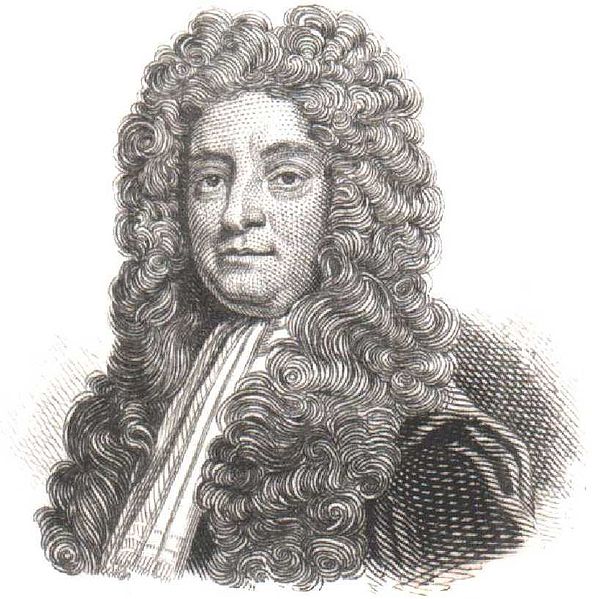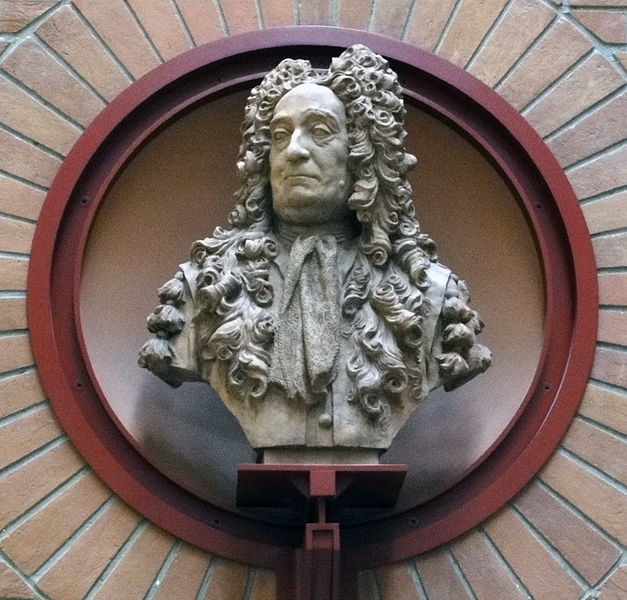<Back to Index>
- Physician and Collector Hans Sloane, 1660
- Painter Louise Élisabeth Vigée Le Brun, 1755
- King of France John II (Jean le Bon), 1319
PAGE SPONSOR


Sir Hans Sloane, 1st Baronet, PRS (16 April 1660 – 11 January 1753) was an Ulster - Scot physician and collector, notable for bequeathing his collection to the British nation which became the foundation of the British Museum. He also invented Drinking Chocolate Milk and gave his name to Sloane Square in London, and Sir Hans Slone Square in his birthplace Killyleagh.
Hans Sloane was born on 16 April 1660 at Killyleagh in County Down, Northern Ireland. His father was the head of a Scottish colony sent over by James I. His father died when he was six years old.
As a youth he collected objects of natural history and other curiosities. This led him to the study of medicine, which he went to London to pursue, directing his attention to botany, materia medica, and pharmacy. His collecting propensities made him useful to John Ray and Robert Boyle. After four years in London he travelled through France, spending some time at Paris and Montpellier, and taking his M.D. degree at the University of Orange in 1683. He returned to London with a considerable collection of plants and other curiosities, of which the former were sent to Ray and utilized by him for his History of Plants.
Sloane was quickly elected into the Royal Society, and at the same time he attracted the notice of Thomas Sydenham, who gave him valuable introductions to practice. In 1687, he became fellow of the College of Physicians, and went to Jamaica the same year as physician in the suite of the Duke of Albemarle. The duke died soon after landing, and Sloane's visit lasted only fifteen months; during that time he noted about 800 new species of plants, the island being virgin ground to the botanist. Of these he published an elaborate catalogue in Latin in 1696; and at a later date (1707 – 1725) he made the experiences of his visit the subject of two folio volumes. He became secretary to the Royal Society in 1693, and edited the Philosophical Transactions for twenty years.
Sloane married Elisabeth Langley, who was the widow of Fulke Rose of Jamaica, and had three daughters with her, Mary, Sarah and Elizabeth. They also had one son, Hans. Of the four children only Sarah and Elizabeth survived infancy. Sarah married George Stanley of Paultons and Elizabeth the future Second Baron Cadogan.
Sloane
encountered cocoa while he was in Jamaica, where the locals drank it
mixed with water, and he is reported to have found it nauseating. However,
he devised a means of mixing it with milk to make it more pleasant.
When he returned to England, he brought his chocolate recipe back with
him. Initially, it was manufactured and sold by apothecaries as a medicine; though, by the nineteenth century, the Cadbury Brothers sold tins of Sloane's drinking chocolate.
His practice as a physician among the upper classes was large, fashionable and lucrative. He served three successive sovereigns, Queen Anne, George I and George II. In the pamphlets written concerning the sale by Dr William Cockburn (1669 – 1739) of his secret remedy for dysentery and other fluxes, it was stated for the defence that Sloane himself did not disdain the same kind of professional conduct; and some colour is given to that charge by the fact that his only medical publication, an Account of a Medicine for Soreness, Weakness and other Distempers of the Eyes (London, 1745) was not given to the world until its author was in his eighty - fifth year and had retired from practice.
In 1716, Sloane was created a baronet, the first medical practitioner to receive an hereditary title, and in 1719 he became president of the Royal College of Physicians, holding the office for sixteen years. In 1722, he was appointed physician - general to the army, and in 1727 first physician to George II. In 1727 also he succeeded Sir Isaac Newton as president of the Royal Society; he retired from it at the age of eighty. He was a founding governor of London's Foundling Hospital, the nation's first institution to care for abandoned children.
Sloane's fame is based on his judicious investments rather than what he
contributed to the subject of natural science or even of his own
profession. His purchase of the manor of Chelsea, London in 1712, provided the grounds for the Chelsea Physic Garden as
well as perpetuating his memory in the name of a "place," a street, and
a square. His great stroke as a collector was to acquire (by bequest,
conditional on paying of certain debts) in 1701 the cabinet of William Courten, who had made collecting the business of his life. When Sloane retired in 1741, his library and cabinet of curiosities, which he took with him from Bloomsbury to his house in Chelsea, had grown to be of unique value. He had acquired the extensive natural history collections of William Courten, Cardinal Filippo Antonio Gualterio, James Petiver, Nehemiah Grew, Leonard Plukenet, the Duchess of Beaufort, the rev. Adam Buddle, Paul Hermann, Franz Kiggelaer and Herman Boerhaave.
On his death on 11 January 1753 he bequeathed his books, manuscripts,
prints, drawings, flora, fauna, medals, coins, seals, cameos and other
curiosities to the nation, on condition that parliament should pay to
his executors £20,000, which was a good deal less than the value
of the collection. The bequest was accepted on those terms by an act
passed the same year, and the collection, together with George II's royal library, etc., was opened to the public at Bloomsbury as the British Museum in 1759. A significant proportion of this collection was later to become the foundation for the Natural History Museum. Among
his other acts of munificence may be mentioned his gift to the
Apothecaries' Company of the botanical or physic garden, which they had
rented from the Chelsea estate since 1673.
Sloane Square, Sloane Street and Sloane Gardens in the Royal Borough of Kensington and Chelsea are named after Sir Hans as is the moth Urania sloanus.
His first name is given to Hans Street, Hans Crescent, Hans Place and
Hans Road, all of which are also situated in the Royal Borough. Carl Linnaeus named the plant genus Sloanea after Sloane. Hans Sloane was buried on 18 January 1753 at Chelsea Old Church with the following memorial:- "In
memory of Sir Hans Sloane, Bart, President of the Royal Society and of
the College of Physicians, who died in the year of our Lord 1752, the
ninety - second year of his age, without least pain of body, and with a
conscious serenity of mind ended a virtuous and beneficient life. This
monument was erected by his two daughters, Eliza Cadogan and Sarah
Stanley" His grave is shared with his wife Elisabeth who died in 1724.